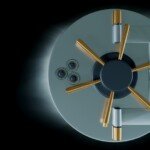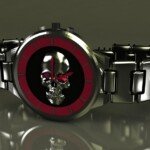Unlock the potential of your workshop: The Ultimate DIY CNC Factory Project Guide
The satisfying howling sound of the spindle, the precise dance of the cutting tool, converting raw materials into complex parts – CNC milling has a unique magic. For manufacturers, hobbyists and aspiring engineers, owning or building DIY CNC mills opens a universe of possibility. But where do you start and how do you ensure success? This comprehensive guide delves into DIY CNC milling projects to give you the ability to bring your ideas to life while also knowing when to assemble professionals.
More than just cutting: Why CNC milling attracts manufacturers
CNC (Computer Numerical Control) Milling involves using computer instructions to control the rotary cutting tool that removes material from the workpiece. Unlike 3D printing, parts are constructed, milling is subtracted, and materials can be carved out to achieve the desired shape, often with unparalleled precision and finish. DIY CNC Mills range from the scaled version you build (such as a router made with a kit) to a refurbished manual mill or a robust desktop model.
appeal? huge:
- Create the impossible: Making parts will be very difficult or impossible (complex gear profiles, complex prints, perfectly matched components).
- Prototypes like professionals: Rapid iterative design of inventions directly from digital models (CAD), robotics, custom tools or drone components.
- Family Seminar Revolution: Make custom brackets, knobs, tool holders, fixtures and fixtures that perfectly suit your needs.
- Artistic expression: Produces stunning logo pieces, decorative panels and intricate sculptures with high detail.
- Skill Development: Master CAD (Computer Aided Design), CAM (Computer Aided Manufacturing), G-code and machining fundamentals.
Navigation Materials Maze: Choose your stock wisely
Your project starts with raw materials. DIY Mills offers many options, but each offers unique challenges:
-
Wood&MDF: Provide the undisputed king for beginners and routers.
- advantage: Easy to cut, tolerant, affordable, easy to use. Perfect for decorative projects, housings, fixtures.
- shortcoming: Can be broken or torn (especially the edges of plywood) and can easily cause wetness. A higher speed cutter is usually required.
- Tip: Use climb milling on certain woods to clean edges. Good dust extraction is crucial. Secure thin/flat sheets can be tricky – consider a vacuum table or specialized fixture.
-
Plastics (acrylic, ABS, PVC, nylon, Delrin): Versatile and exquisitely organized.
- advantage: Wide range of characteristics (rigid, flexible, shadow-resistant). The machine is clean and has good results. Easier on a cutting machine than metal. Ideal for functional prototypes, gears, mountings, housings.
- shortcoming: Some (such as PVC) produce toxic smoke – mandatory ventilation or extraction is a must. If the feed/speed is wrong, the thermoplastic can be melted and the flute is blocked. Acrylic can chip.
- Tip: Use a sharp cutter designed for plastic. Optimize RPM and feed rate. Coolant is usually not required, but compressed air helps to remove the chip. Use the proper labor force (double-sided tape usually works well).
-
Soft metal (aluminum, brass, copper): DIY factories start showing real versatility.
- advantage: Create highly functional and durable parts (engine components, brackets, custom accessories). Aluminum is usually the easiest to obtain DIY metal.
- shortcoming: There are much more machines and tools than wood or plastic than rigidity. Accurate feed/speed calculations are required. Proper chip evacuation and lubrication/coolant (even fog) is essential to prevent canning, tools from wear or destroying expensive end mills. The fix must be rocky.
- Tip: Start with thin sections and simple geometry. Use a carbide end machine designed specifically for aluminum. Embrace the climbing mill. Single hair or O-type end mills usually work best. Expect processing time to be slower than wood.
- Hard metal/steel (carbon steel, tool steel): It is usually the field of heavier industrial machines. but…
- advantage: The ultimate strength and durability of demanding applications.
- shortcoming: Major challenges for most DIY factories: Needs high stiffness, significant spindle power (usually > 1kW), slow speed, rigid tools (carbides), effective coolant system and great patience. Extreme wear on machines designed for this purpose. Material costs and tool costs are higher. Poor execution attempts can damage the machine components.
- Reality check: While specialists with powerful conversion mills may handle smaller shallow cuts on shallow steels of mild steel, 4140, titanium, stainless steel and hardened steel In general, the actual capabilities of the vast majority of DIY desktops or router-based CNC Mills. The required accuracy and the force generated require professional grade equipment.
Tools: Basic equipment for successful CNC milling
- CNC Mill: Machine stiffness is crucial. Thorough research options – The kit builds printnc or mpcnc, desktop units such as various 6040/3020 variants (some capable of light aluminum) or converted desktop manual mills (e.g. G0704).
- CAD software: Design your parts (Fusion 360, Freecad, Solidworks, Onshape).
- CAM software: Convert your CAD design to a mechanical path (G code). (Fusion 360 CAM, Vectric products, Cambam, Estlcam).
- Control software: Run the mill based on G code (MACH3/4, LinuxCNC, GRBL controller, such as UGS, BCNC).
- End Mills: Your cutting tool. There are many types (flat, ball nose, V-position, chamfer). Key factors: material compatibility, number of flutes, paint. Carbides are standard for metals.
- Collets & Tool Holders: Hold the end mill on the spindle firmly (ER clamps are common). Wobble kills precision here.
- labor force: This is Critical. Options include: Machine Attractions, T-slot nuts/bolts/clips, toe clips, dedicated fixtures, vacuum tables, double-sided foam tape. Rule #1: The artifact must not be moved!
- Safety equipment: Kevlar gloves for handling sharp metal, safety glasses alwayshearing protection, dust masks/respirators (especially for wood/plastic dust, metal…in fact).
- Measuring tools: Caliper (number!), microns (if doing precise metal work), edge finder, dial indicator/touch probe to set.
Project ideas inspire your creativity (from beginners to advanced)
- Level 1: Wet your feet
- Signs and plaques: Personalize gifts or decor with V-BITS, with textured background and clean fonts.
- Simple shell: Cut from wood or acrylic easily with Tab and Slot joinery to make custom boxes for electronic projects.
- Router template: Create precise templates for manual routers to produce shapes at scale.
- Chess and Board of Directors: Use analysis and bagging operations.
- Custom Coasters: Try carving and embossing engraving.
- Level 2: Building skills and functions
- Precision gaskets and gaskets: The machine is perfect for washer and gaskets from aluminum Delrin or brass to precise thickness.
- Fixtures and fixtures: Make labor aids that are tailored to your other tools or specific projects.
- Replacement Hobby Part: Recreate broken stands or custom upgrades for RC cars/aircraft.
- Complex 2.5D terrain: Machine map, artistic landscape or complex relief patterns.
- Gear system: Design and cut formal pulleys or simple thrill gears made of Delrin or aluminum.
- Level 3: Pushing the boundaries (requires rigid machines and skills)
- Custom camera/lens installation: Precision aluminum brackets for photography/photographic drilling rigs.
- Engineering components: Multipart components with press/slide fit – such as custom visors or toolboards.
- Small engine components: Non-pressure parts such as interlocks or custom mounts (requires meticulous fixtures).
- Functional prototype: Powerful brackets, chassis parts or actuators (aluminum preferred) for robotics, EBIKES or complex mechanisms.
- Complex 3D outlines: True 3D shapes are engraved using a ball end mill (advanced cam is required).
Key Tips for Successful DIY CNC Projects
- Easy to start: Master the fundamentals before dealing with complex geometric shapes or challenging materials.
- Manufacturing Design (DFM): Consider tool access, minimize narrow pockets, avoid sharp inner corners (using a larger radius than the cutter radius), including references for multilateral work.
- Simulation, simulation, simulation: Always perform cam simulation before cutting. Look for collisions and travel quickly to clear the problem.
- Make sure you work: Double and triple check your labor strategy. If the parts move, things can break or become dangerous.
- Feed and Speed Wisdom: Don’t guess. Use manufacturer’s advice or online calculator as a starting point. Listen to your factory. What to know "Happy processing" Sounds like screaming with a chat or a tool. This is crucial to metal!
- Master your settings: Learn how to set precisely your working coordinate system (WCS) – X, Y, and Z zeros. Understand the offset of tool length. This is the basis of accuracy.
- Embrace iteration: Your first cut may not be perfect. Test cutting in waste is critical to critical dimensions and finishes. put "Trial" Deeply cautious.
- Lubricant/coolant is essential for metals: Even a basic fog system can significantly improve tool life, finish and prevent chip soldering. For aluminum, WD-40 or Kool Mist liquid is suitable for DIY.
- Safety first: Do not leave the machine unattended during processing. Know where you are in emergency stop. Wear suitable PPE for the material. Handle sharp tools and metal edges with caution. Keep the workspace clean and organized.
in conclusion
Launching the DIY CNC milling project is an incredibly meaningful journey that combines creativity, technical skills and problem solving. It enables you to make precise parts through most other home methods. From personalized wooden logos to functional aluminum prototypes, your mill is a versatile tool that is limited primarily by your imagination, durability and understanding of its abilities.
But realism is the key. Recognizing the inherent limitations of DIY machinery, especially in terms of rigidity, power and vibration management – is crucial for success and safety. Attempting to force capabilities beyond material or tolerances can often lead to frustration, tool breakage, potential damage and inadequate results.
Understand that boundary is where the Greatlight Stape is.
What Greatlight provides:
Greglight is a professional five-axis CNC processing manufacturer equipped with state-of-the-art equipment and deep expertise. We offer valuable extensions to DIY enthusiasts and professionals:
- Go beyond DIY limits: When your vision involves complex geometry (deep cavity, complex contour, undercut), harsh materials (hardened steel, stainless steel, titanium, exotic alloys), or requires industrial-grade precision and tolerances (±0.025mm or tighter), our five-axis functionality is delivered.
- Complexity becomes simple: Five-axis machining allows us to access part functionality from almost any angle in a single setup, eliminating the complex fixed needs common on simpler machines. This makes it impossible or too expensive for DIY geometry.
- Superior rigidity and strength: Our professional machines work effortlessly with high cutting forces of tough materials, ensuring dimensional stability and excellent surface finishes even during mass production.
- Comprehensive solution: In addition to milling, Greatlight offers a comprehensive one-stop post-processing and finishing services – burring, polishing, anodizing, heat treatment, electroplating, painting, silk screening.
- Speed and scale: Need multiple copies, or even low volume production? We can scale quickly while maintaining consistency and quality, usually with DIY settings that are not possible at speed.
- Material mastery: We can machine almost all available materials skillfully. Forget hunting limited cuts; we provide full spectrum access.
DIY spirit has been enhanced:
Think of your workshop CNC mill as an incredible tool for prototyping, fixtures and fixture creation, more forgiving tolerances for personal projects, and learning the basic skills of CNC. When your project requires absolute precision, advanced materials or complex production geometry, working with Greatlight will be the next step for nature, efficiency and professionalism. We bridge the gap from garage to production reality, ensuring that your most ambitious design is made perfectly. Get in touch with the Greatlight today and unleash the true potential of your ideas.
DIY CNC Factory Project Guide: FAQ (FAQ)
1. What is the difference between 3-axis, 4-axis and 5-axis CNC mills?
- 3 Axis: Move the cutting tool along the standard X, Y, and Z (left/right, forward/back, up/down). The most common and competent parts. Best for 2.5D shapes (such as profiles and pockets) and simpler 3D surfaces.
- 4 axis: Increase rotation around the X-axis (usually table rotation – "A-axis"). Allows the use of a set to machining on multiple sides of the part, or creates a continuous curved profile around a cylinder such as a camshaft or sculpture.
- 5 axis: Increase rotation two The rotation axis is usually the A axis (rotating around X) and C axis (rotating around Z), or the B axis (rotating around Y) and C axis. This provides complete freedom to oriented cutting tools from any angle relative to the part. For complex engraved surfaces (aerospace parts, complex molds), the parts need to be processed in one setup (a lot of time savings) and necessary to avoid tool collisions.
2. My DIY CNC mill fights aluminum/steel, leaving behind bad finishes and destruction tools. What am I doing wrong?
Metal processing requires obvious rigidity and power. Common DIY rig problems include:
- Inadequate machine stiffness: Frame bending, spindle deflection or loose bearings can cause tremor ("singing" Noise) and poor effect.
- Incorrect tools: Use wooden/plastic end mill on metal. You need sharp, suitable carbide cutters designed for metals.
- Bad feed and speed: Usually too slow (ratically rather than cutting) or too fast. Using the F&S Calculator Specific materials and cutter.
- Lack of lubrication/coolant: It is crucial to prevent the internal edges on the cutting machine and heat dissipation. Misty or even manual brushing of teeth with coolant helps (but be careful about workplace safety).
- The factory is not safe enough: Vibration kills the result. Use sturdy vise bolts to fix or special fixtures.
- Too much depth/cut width: Perform smaller pedaling and progressive (radial depth of cutting – rdoc or axial depth of cutting – ADOC), especially on less rigid machines.
3. How important is CAD/CAM software knowledge? Can I skip it?
CAD/CAM is essential for anything other than the simplest shape. CAD creates virtual models. CAM generates tool paths (precise motion of the machine) and G-code that controls the machine. When you able Manual code G code for simple shapes is very inefficient and error-prone. Mastering basic CAD/CAM is the basic skill required to succeed in CNC projects. Free and low-cost options (such as Fusion 360 people) are widely used.
4. Why would I choose Greatlight as my prototype in my local machinery workshop?
Greglight specializes in high-precision, small-batch and custom solutions. Special five-axis machining:
- Complexity expertise: Designed specifically to deal with geometry (such as deep internal cavity or complex 3D surfaces), these geometries overwhelm the 3-axis machine and many smaller shops.
- Advanced features: Direct access to the five-axis technology eliminates multiple settings, ensuring higher accuracy on complex parts.
- A wide range of material selection and finishing: Expertise in a wide range of metals and comprehensive in-house finishing services provides a seamless one-stop solution for precision parts.
- Efficiency and scalability: Optimized for fast turnaround of fast custom parts and efficient transition to small batch production.
- Focus on precision: Our processes and equipment are calibrated and maintained to consistently meet demanding tolerances.
5. How accurate and accurate is my DIY CNC mill?
The accuracy varies greatly:
- Router-based platform: Dimensional accuracy Dimensional accuracy is common around ±0.1mm to ±0.5mm and is carefully set and compensated, but is affected by temperature, material stress and frame stiffness. Perfect for many wooden/plastic projects.
- Small desktop factory: Better rigidity provides potential accuracy for metals, from ±0.05mm to ±0.025mm, requiring careful calibration, tool compensation (measurement of jumps!) and temperature control.
- Convert Mill (G0704, etc.): With significant upgrades and adjustments, similar accuracy (±0.025mm or slightly better) to small industrial machines is possible to achieve the critical dimensions of metal in small tools.
- Greatlight Industrial Machines: Ability to repeatable accuracy up to ±0.005mm (±5 microns) or higher.
6. What are the main limitations of DIY CNC mills?
- rigidity: The biggest obstacle. Flexibility can cause vibration (quiver), poor surface effect, inaccuracy and tool breakage, especially in harder metals (steel).
- Spindle power: Limited horsepower prevents aggressive metal removal rates and effective machining of hard steel.
- Speed range: Lower RPM spindles are ideal for small diameter tools required for fine details or larger tools in larger materials requiring slower SFM.
- Coolant management: In a home store, it is difficult to properly handle large amounts of coolant.
- Work envelope: DIY machines usually have smaller cutting areas.
- Time and cost: Processing composites or precise metal parts takes a lot of time and consumes expensive tools on DIY machines, often exceeding the same professional cost.
7. When should I consider using professional services like Greatlime?
Consider the Greatphime of the project involved:
- Material: Hardened steel, stainless steel, titanium, inconel or complex alloys.
- tolerance: The accurate accuracy ratio of ±0.05mm is consistently required on complex features.
- geometry: Five-sided parts require a setup, deep/wrong pockets, intricate 3D engraving, internal lines.
- Surface finish: Need a high finish (e.g., RA <0.8μm) directly on the machine or a polished, ground finish, DIY machines have difficulty with metals other than simple aluminum.
- volume: Consistency and speed are important in several identical parts.
- complex: It has a simple 3-axis policy function, without complex fixed functions.
Greatlight enables you to leverage the accessibility of DIY CNC for prototyping and skill building while providing seamless, high-performance pathways to professionally produce the most demanding or refined projects. Start designing, mastering the basics of the workshop, and working with Greatlight when uncompromising precision or ability is needed. Get a free quote now!

















